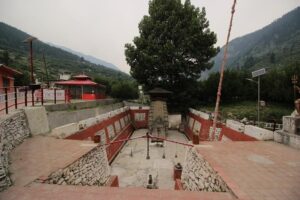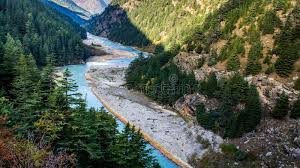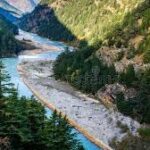Kalp Kedar Temple: A Historical and Architectural Mystery in Dharali, Uttarakhand
Kalp Kedar Temple mystery : Kalp Kedar Temple, Dharali, about 3 km from Harsil

Kalp Kedar Temple mystery : Dehradun, 3 August 2025 : Nature has showered its bounty upon the Harsil Valley, nestled in the lap of the Himalayas. Located within this valley, between Harsil and Gangotri, is the beautiful village of Dharali, situated at an altitude of 2680 meters on the banks of the Bhagirathi River. From here, Gangotri is just 20 km away. About 60 meters from the main road near the village, a magnificent temple comes into view—built in the same style as Kedarnath. This is the Kalp Kedar Temple. Shrouded in mystery, this temple has been a center of attraction for history enthusiasts and devotees for years. It is said that Adi Shankaracharya established a cluster of 240 temples here, but they were all buried in debris during a river flood. However, this mystery remains unsolved.
Rewinding the pages of time reveals some astonishing facts. In 1815, a Scottish traveler and East India Company officer, James Baillie Fraser, journeyed to the sources of the Ganga and Yamuna rivers. He was the first European to get so close to the Himalayas. In his travelogue, “Journal of a Tour Through Part of the Snowy Range of the Himālā Mountains,” he mentioned a place similar to Dharali. Although the name “Dharali” is not explicitly in the book, he expressed his amazement at the temples he saw. Furthermore, a photograph taken about one and a half centuries ago also proves that more than one temple existed here. This rare photograph was taken by the British photographer Samuel Brown (likely Samuel Bourne). In it, two other temples are visible alongside the present-day Kalp Kedar Temple. Samuel Brown worked as a photographer in India between 1863 and 1870. A photo titled “Small Temples on the Ganges at Derali,” from 1865, is preserved at the Getty Museum in Los Angeles, USA, where “Derali” is believed to be Dharali. A remarkable detail in the picture is that the Bhagirathi River appears to be flowing in the opposite direction of its current course, in the very spot where the Gangotri highway now stands. This photograph is still preserved by the Archaeological Department and in local homes, highlighting the historical significance of the temple.
The Kalp Kedar Temple is built in the same architectural style as the Kedarnath Temple. It is famous for its partially submerged Shiva Linga. The temple is located about 60 meters from the road and is about 12 feet below the ground level. The sanctum sanctorum is about 20 feet deep from the entrance. Inside the sanctum, there is a white crystal idol of Lord Shiva. The temple complex also features carvings of a Shiva Linga, Nandi, and a pot. The intricate carvings of gods and goddesses on the walls make it even more magnificent. Archaeologists believe the temple dates back to the 17th century. It is said that in 1945, villagers spotted the temple’s spire, and they dug a path to the entrance. Just last month, the Kalp Kedar Temple committee began new excavations in the complex and found several carved stones.









